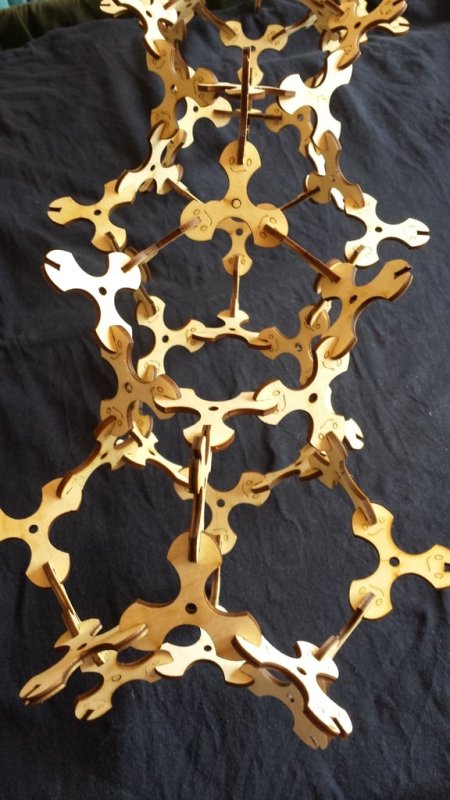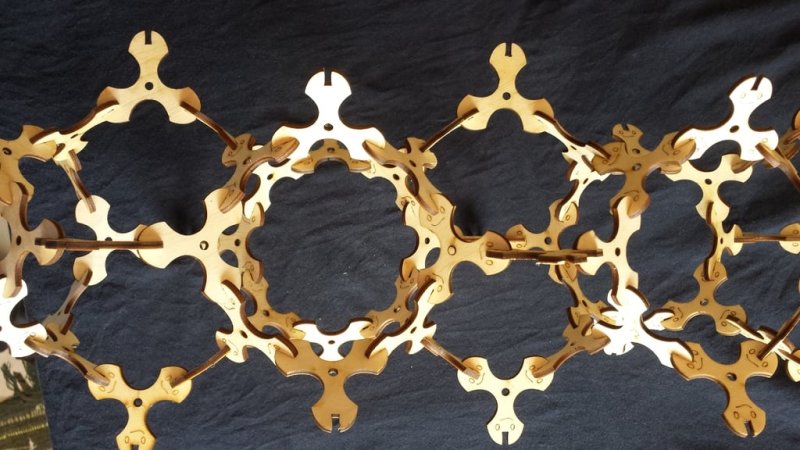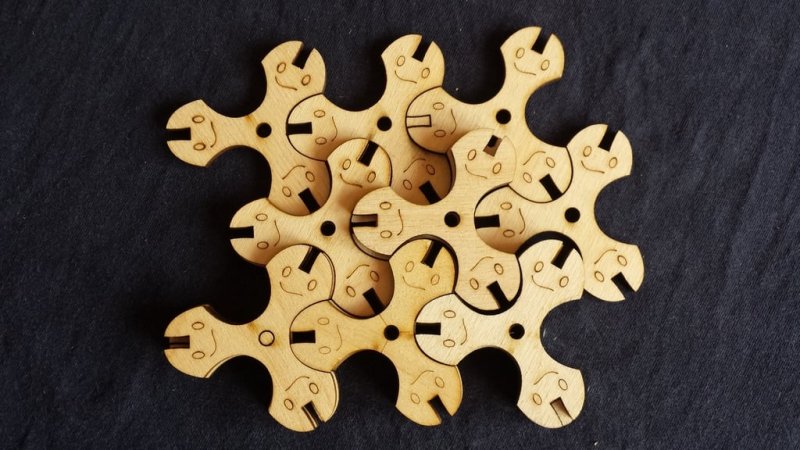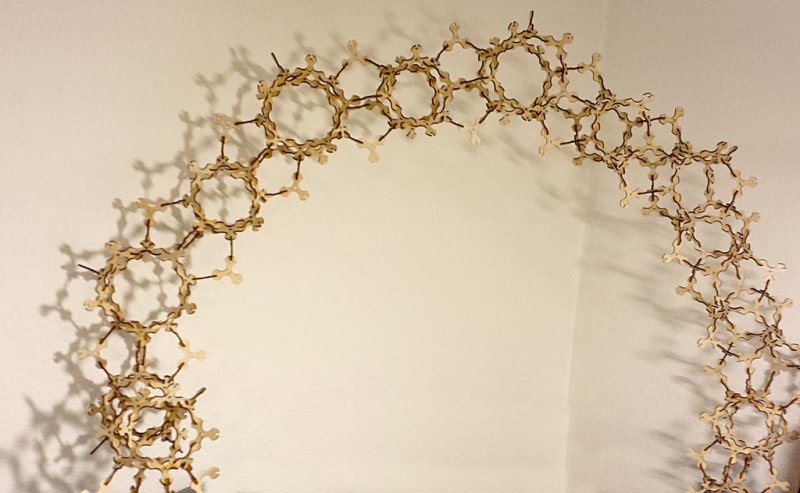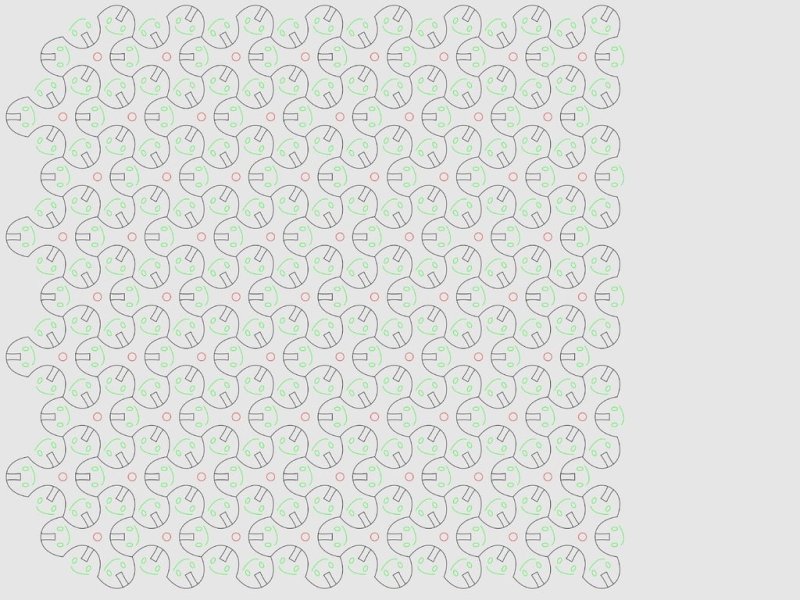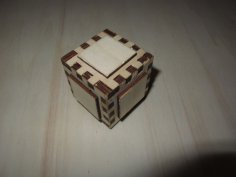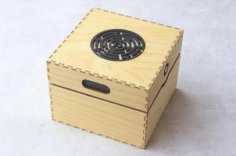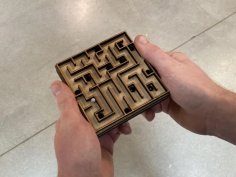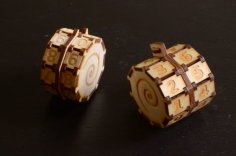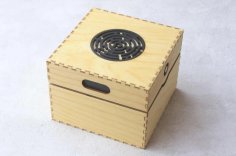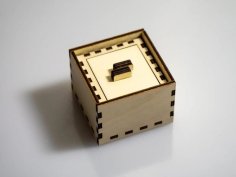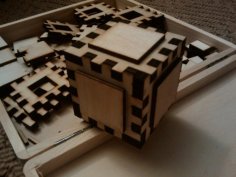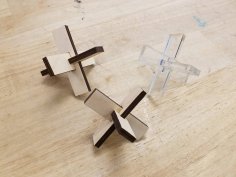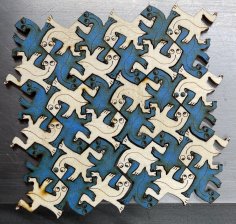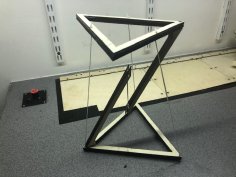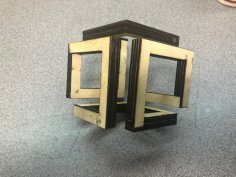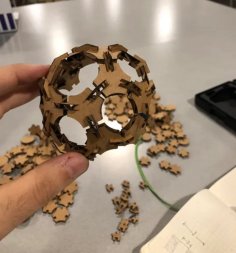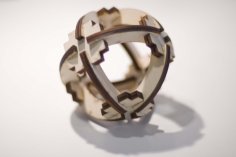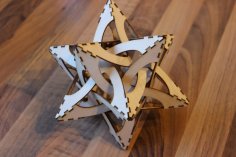Laser Cut Dreikopftile
Summary
If you see lots of fidget spinners on the fotos: Congratulations -- maeeep -- wrong!
The objects here are simple wooden toys cut from 3mm plywood with a lasercutter. (Yeah, the center hole is only there to fool those fidget spinner addicts.) The pieces tile the plane and can be cut with very little waste. The pieces connect to each other in a zig-zag way, and 8 pieces form a ring. This is not mathematically perfect, but as it is wood, it easily bends inwards to close the ring. Or 10 pieces form a ring if bent outwards.
Two rings can be connected by additional 4 pieces to form a cube (or a pentagonal box).
Stacked cubes form columns. Columns can be connected in 90 deg. angles.
An arc (or a complete large 10 sided regular polygon) can be formed, if short columns of cubes are connected with 5 sided boxes in regular intervals.
The svg file also has a layer containing 4 headed tiles. Those are intended to create useful strings of tiles, which is not possible with the 3 headed tiles.
Instructions
Mathematical properties
These geometric structures can be seen, when playing with dreikopftile: * Triangle: The basic tile is a triangle. * Square: a tight 'ring' of 8 tiles has 4 distinct corners. * Pentagon: a widened ring of 10 tiles has 5 distinct corners. * Hexagon: a cube viewed diagonally is a hexagonal structure. The basic tile has 6 corners. They form a regular hexagon. In scientific research presented at http://www.theorie1.physik.fau.de/people/skapfer/index.html a very similar design is classified as quasicrystals: "Quasicrystals include additional degrees of freedom (phasons) over the ones known from periodic crystals (phonons). How these lead to new kinds of topological defects is currently being investigated" -- I can confirm that there are sometime topological defects if the plywood snaps, when you try to bend it into rings of 8 or 10. But that is probably not what the research is about.... The relation to http://www.theorie1.physik.fau.de/people/skapfer/media/dodeca-qc-tiles.ps not fully understood. Maybe it is a remix? :-)
Files
- dreikopftile.svg


